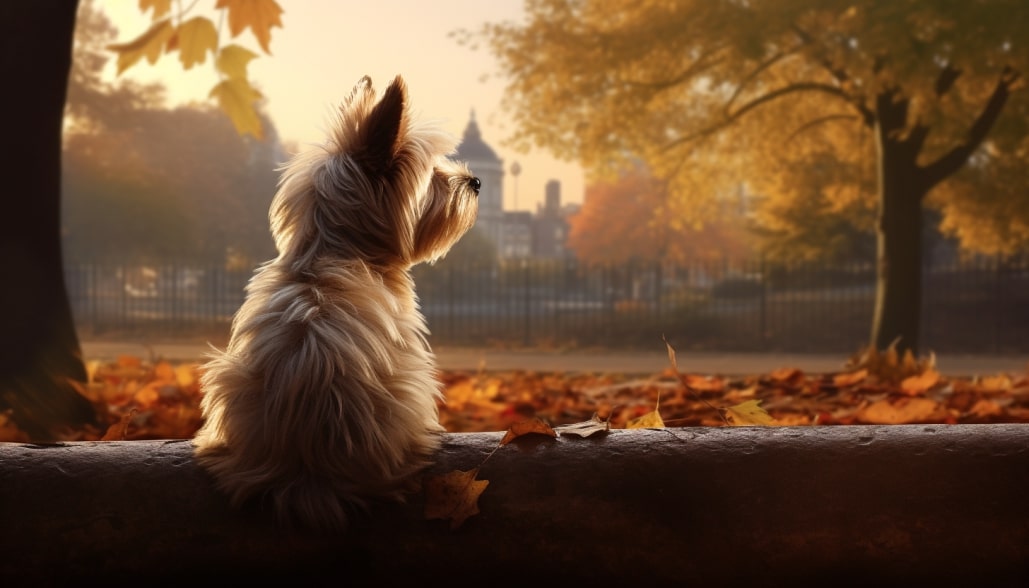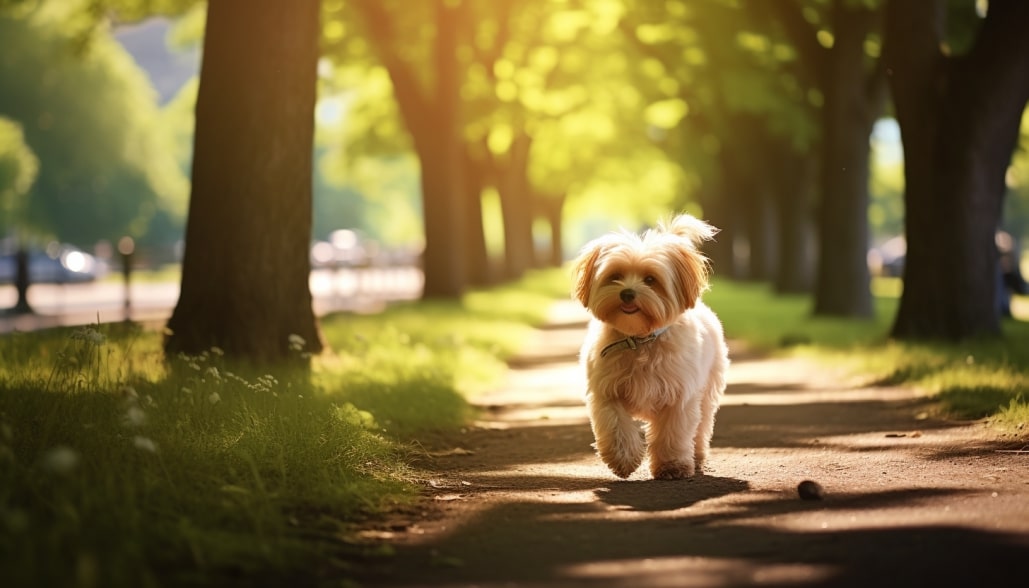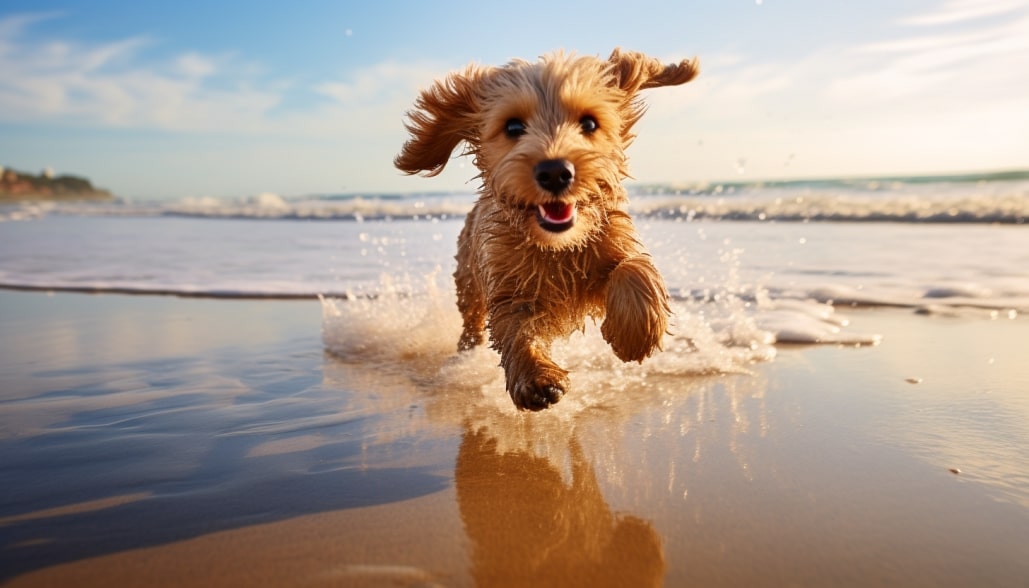
A Guide to Vancouver’s Dog Laws and Park Etiquette
Imagine a sunny day in Vancouver. You’re at a lush, vibrant park, surrounded by happy dogs frolicking and owners casually chatting. There’s nothing quite like watching your furry friend run free, tail wagging in pure joy. But this idyllic scene relies on an unwritten code—dog park etiquette. As dog lovers, it’s our responsibility to understand and follow these unspoken rules. The goal? A harmonious, safe space where dogs can socialize and humans can relax. This guide is your one-stop resource to navigate Vancouver’s dog parks like a local. Let’s make every outing a pawsitive experience!
Understand Vancouver’s Dog Laws
Dog ownership comes with significant responsibilities, and one of them is understanding the local laws governing pet behaviour in public spaces. In Vancouver, several laws are critical to ensure that public areas, such as dog parks, are safe and enjoyable for everyone.
First and foremost, all dogs over three months old in Vancouver must have a license. The City uses the revenue from dog licensing to maintain and improve dog parks and off-leash areas. Furthermore, dogs must have updated rabies vaccines, and proof of vaccination is required when you license your pet.
The leash laws in Vancouver dictate that dogs should be on a leash unless in a designated off-leash area. Leashes should be no longer than 2.5 meters, and retractable leashes are not recommended. However, even in off-leash areas, owners must always have a leash with them and must be able to recall their dog immediately. If your dog is found off-leash in a leash-required area, you could be fined under the Animal Control Bylaw.
Another critical law relates to poop disposal. Dog owners are required to immediately pick up after their pets and dispose of it correctly. Failing to do so could result in fines. It’s more than just law—it’s a fundamental part of dog park etiquette.
Key takeaway: Before hitting Vancouver’s dog parks, make sure you understand and comply with local laws to ensure a safe and enjoyable environment for everyone.
Dog Park Etiquette in Vancouver
Dog parks are meant to be fun, social spaces for dogs and owners alike. However, this harmony relies heavily on adhering to certain etiquette norms. Here are some fundamental rules of behaviour to follow when visiting dog parks in Vancouver.
Proper Introduction to Other Dogs
When entering a dog park, it’s important to introduce your furry friend properly to the other dogs. This means allowing your dog to first sniff and get acquainted with the other dogs from the safety of the park’s entrance or gate. This brief pause can help prevent misunderstandings or conflicts. Remember, if your dog seems uncomfortable or aggressive, it may be better to try again another day.
Monitoring Your Dog’s Play Behavior
At the park, it’s not just about socializing with other dog owners—it’s crucial to keep a close eye on your pet. Understand the difference between play and aggression. While dogs often growl or bark during play, overly rough play, pinning, and non-stop chasing can indicate escalating tension. If your dog exhibits any signs of aggression, it’s essential to intervene and give them time to cool off.
Understanding Signs of Aggression and Discomfort
Being able to read your dog’s body language is key to preventing scuffles or distress at the park. Raised fur, a stiff tail, excessive growling, or intense fixation on another dog may all be signs of potential aggression. Similarly, a tucked tail, ears pinned back, and avoiding eye contact are signs your dog may be uncomfortable or scared. If you notice any of these signals, it might be time to step in or perhaps call it a day.
Key takeaway: Good dog park etiquette starts with understanding your pet’s behavior. Ensuring they’re comfortable, respectful, and safe creates a better environment for everyone.

Tackling Common Challenges
Even with the best intentions, challenges can arise during your park visit. Here’s how to tackle some of the common ones.
What if My Dog Isn’t Social?
If your dog isn’t naturally social, it doesn’t mean they can’t enjoy the dog park. Try visiting during off-peak hours when fewer dogs are present. Gradually exposing them to more dogs can help build their confidence. Always be patient and supportive.
Dealing with Aggressive Dogs
Encountering an aggressive dog can be scary. If a dog starts displaying aggression towards yours, try to calmly but quickly move your dog away. Always avoid getting between two dogs that are fighting—instead, try distracting them.
If Your Dog Has an Accident
Even the best-trained dogs can have accidents. If your dog relieves themselves outside of designated areas, clean it up promptly. Always carry bags with you, and use disposal bins where provided.
Key takeaway: Challenges at the park can be daunting, but with preparation and quick thinking, you can handle most situations effectively.
Equip Yourself: Essential Items for a Dog Park Visit
Before you head to the dog park, it’s essential to pack a few things that’ll make your visit more enjoyable and stress-free.
The Must-Have List
Here’s a list of items you should never leave home without:
- Leash: Whether you’re visiting an off-leash park or not, it’s crucial to have a leash on hand. In a situation where you need to quickly regain control of your dog, a leash is your best friend.
- Poop Bags: As a responsible pet owner, it’s your duty to clean up after your dog. Always carry poop bags with you to ensure you can dispose of waste correctly.
- Water and Bowl: Dogs can quickly get dehydrated, especially when they’re running around having fun. Bring along a water bottle and a portable bowl to keep your furry friend hydrated.
- Treats: Treats can be handy for rewarding good behaviour, distracting your dog, or luring them away from a potential problem.
Nice-to-Have Extras
While not strictly essential, these items can often come in handy:
- Toys: A favourite toy can help your dog burn off energy and stay entertained. Just ensure it’s a toy they’re willing to share with others to avoid potential conflicts.
- Towel: If there’s a chance your dog might take a dip, a towel can be useful for drying them off before getting back in the car.
- First Aid Kit: While we hope you never need it, having a basic pet first aid kit on hand can help you deal with minor injuries or issues on the spot.
Key takeaway: A well-stocked bag can make your dog park visit smoother and more enjoyable. Pack the essentials, and consider adding a few extras for comfort and convenience.
Paw-sitive Park Experiences: Tips from Vancouver Dog Owners
Now that you’re armed with the basics, let’s hear from some seasoned dog parkgoers in Vancouver.
Real Life Stories
Lisa, a local dog trainer, shares: “Dog parks can be fantastic socialization spots, but it’s essential to remember they’re not for every dog or every stage of a dog’s life. Puppies and older dogs may find the park overwhelming or overstimulating. Always pay attention to your dog’s comfort and enjoyment levels.”
James, a long-time dog owner, advises: “Regulars at dog parks can be a wealth of knowledge. Don’t hesitate to ask them about the park’s unspoken rules, the best times to visit, or any other local tips they might have.”



Top tips for off-leash dog park etiquette
- Assert leadership. Your canine friend needs to recognize your authority at all times, especially when other dogs are present. Train your dog to respond to your call; select a unique word or phrase unlikely to be heard at the park. Make training enjoyable by offering special treats as rewards.
- Proceed with caution. A well-structured park will feature a double-gate entrance. Rather than rushing through, leash your dog and enter the first gate, taking a moment to observe the surroundings. If the gates are swarmed with dogs or if there’s a commotion, refrain from entering. This pause also gives other dogs a chance to acclimatize to your dog’s presence, reducing the likelihood of overly excited reactions.
- Maintain vigilance. Your primary responsibility once inside the park is to supervise your dog, not socialize with other pet owners. It’s crucial to always be aware of your dog’s whereabouts and actions. Should trouble arise, recall them immediately. Also, ensure you clean up after your dog. While many parks provide waste bags, it’s advisable to bring your own.
- Understand canine communication. It’s not enough for your dog to be sociable; you need to comprehend dog behaviours. Playing dogs exhibit relaxed ears, wagging tails, and may perform a “play bow.” Dogs showing signs of distress may have half-tucked tails and pulled-back ears, with their pupils contracted to reveal the whites of their eyes. An aggressive dog will appear tense, will hold its head high, lean forward, and have ears pointing upwards or forwards. Differentiate between playful growling and threatening snarling. If you spot signs of aggression, distract the dog using treats or toys. However, be cautious about using these distractions in the park to avoid instigating problems.
- Be prepared for conflict. Despite careful monitoring, fights may still occur. Be ready to respond: Allow a moment for the dispute to resolve itself. Many canine conflicts end almost as soon as they begin. If the fight persists, try to separate the dogs with a hose, water pistol, or a long stick. Avoid intervening directly with your hands or body. If the fight continues beyond a few seconds, you and the other dog’s owner should approach the dogs from behind, lift their back legs gently like a wheelbarrow, and move backward. Avoid grabbing the collar as the dog may reflexively bite you.
- Refrain from bringing puppies. Puppies can be difficult to manage and while they’re often found adorable by humans, mature dogs may find them annoying. Moreover, unvaccinated puppies are vulnerable to diseases. Wait until your puppy is at least 6 months old before introducing them to a dog park. Remember, a dog park isn’t a training ground, but a venue to practice already learned social skills.
- Plan your visit wisely. Practicing good etiquette can prevent most issues. Extra vigilance also helps. However, avoid the dog park if your dog: Isn’t vaccinated or lacks flea and tick protection Isn’t neutered or spayed
Paws for a Moment: Reflections on Dog Park Visits
Before we end our exploration of dog park etiquette in Vancouver, it’s important to reflect on why we visit dog parks and what we want to gain from the experience.
The Value of Dog Parks
Dog parks offer an unmatched opportunity for dogs to run freely, socialize with other dogs, and spend quality time with their owners. They contribute to the physical health, mental well-being, and overall happiness of dogs, making them an important part of a dog’s life in urban areas like Vancouver.
Building Community
Dog parks aren’t just about the dogs; they also serve as social spaces for dog owners. They are a place to meet fellow dog lovers, share advice, or simply enjoy the outdoors. Over time, you’ll likely become part of a community—a group of regulars who know each other’s dogs and look out for one another.
Leaving a Paw-sitive Impact
By following proper dog park etiquette, you help create a safe, fun, and enjoyable environment for everyone. Your actions set the tone for other park visitors and can significantly influence the overall atmosphere. So let’s all do our part to make our local dog parks the best they can be!
Key takeaway: A visit to the dog park isn’t just a casual outing—it’s a chance to enrich your pet’s life, contribute to your community, and foster a better environment for all.
“Paws and Reflect 🐾”
In Vancouver’s bustling urban landscape, dog parks are an oasis for our four-legged friends. These spaces provide a much-needed opportunity for dogs to exercise, socialize, and enjoy some off-leash freedom. As dog owners and lovers, we have a responsibility to understand and follow the rules and etiquette that make these parks enjoyable for everyone. By doing so, we contribute to a vibrant, respectful, and caring community—one where every dog can have its day!
FAQs
What should I do if another dog is being aggressive towards my dog?
In case of aggression, it’s important not to panic. Remove your dog from the situation calmly and quickly. Do not put yourself between the dogs to avoid any harm. If the other dog’s owner is not taking action, you can try to distract the dogs with a loud noise. If the situation continues, report it to park authorities or local animal control.
Can I bring my puppy to a dog park in Vancouver?
Puppies can be brought to dog parks, but they should be fully vaccinated before they interact with other dogs. As young dogs can be easily overwhelmed, it’s often recommended to wait until they’re at least six months old and have learned basic obedience commands. Also, consider bringing your puppy during off-peak hours to start with.
What is the penalty for not picking up after my dog in Vancouver?
As per the City of Vancouver Animal Control Bylaw, not picking up after your dog can result in a fine. This is part of the city’s effort to keep public spaces clean and enjoyable for everyone.
Are there specific peak times to avoid at dog parks?
Peak times can vary from park to park, but generally, dog parks are busiest in the mornings before work and in the evenings after work. Weekends, especially sunny ones, can also be quite busy. If you or your dog prefer a quieter environment, consider visiting during off-peak hours, like midday during the week.
Can I let my dog off-leash outside of designated areas in Vancouver parks?
Dogs must be kept on a leash in all public places in Vancouver except for designated off-leash areas. Allowing your dog to roam off-leash outside of these areas can result in a fine, according to the City of Vancouver Animal Control Bylaw. Always check the signs in the park to understand where the off-leash areas are.
Sources and References
- City of Vancouver. “Getting a Dog Licence.” Vancouver.ca, 2023, vancouver.ca/home-property-development/licensing-your-dog.aspx. Accessed 4 July 2023.
- City of Vancouver. “Animal Control Bylaw 9150.” Vancouver.ca, 2023, vancouver.ca/your-government/animal-control-bylaw.aspx. Accessed 4 July 2023.
- City of Vancouver. “Stanley Park.” Vancouver.ca, 2021, vancouver.ca/parks-recreation-culture/stanley-park.aspx. Accessed 4 July 2023.
- “IT Application.” Vancouver.ca, 2023, covapp.vancouver.ca/parkfinder/parkdetail.aspx?inparkid=110. Accessed 4 July 2023.
- “IT Application.” Vancouver.ca, 2023, covapp.vancouver.ca/parkfinder/parkdetail.aspx?inparkid=85. Accessed 4 July 2023.

